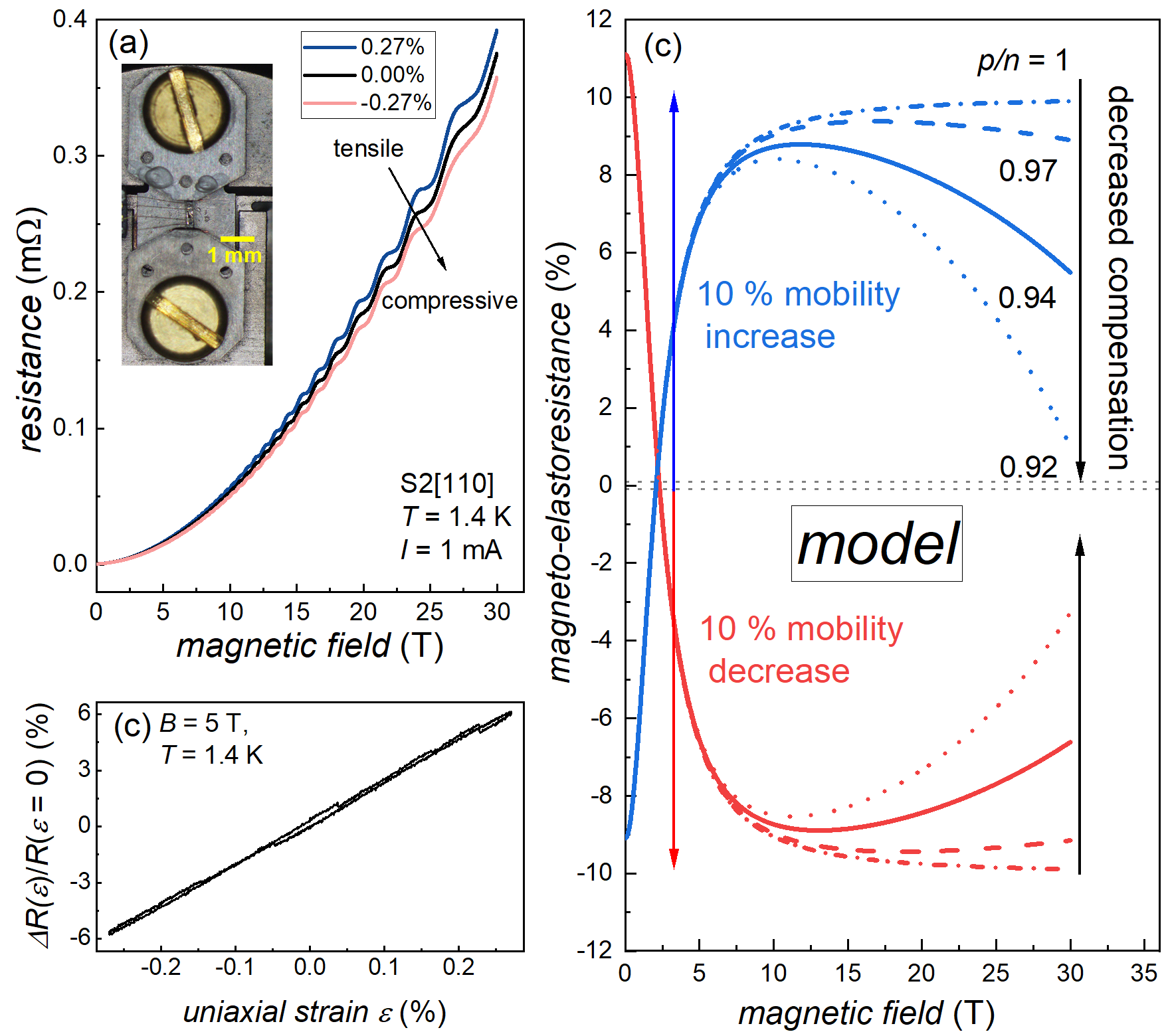J. F. Linnartz, A. Kool, S. Wiedmann, HFML Nijmegen and IMM Radboud.
Quantum materials often exhibit remarkable sensitivity to subtle changes in their physical environment, a feature that can unlock new functionalities and drive innovative applications. One key phenomenon is magneto-elastoresistance, where the electrical resistance of a metal in a magnetic field changes when the material is stretched or compressed. However, understanding this effect can be tricky, especially in materials with complex internal structures. A team of researchers from the University of Amsterdam, Princeton University, and HFML-FELIX has investigated the material ZrSiSe, and their findings offer fresh insights into how quantum materials react to uniaxial strain. In recent years, the use of uniaxial strain has proven to be a powerful method for exploring new phenomena in various quantum materials, including superconductors and narrow-band-gap materials, often using commercially available strain cells. One key advantage of uniaxial strain is that it can be varied continuously and, unlike chemical doping, it does not naturally introduce extra disorder into the material under investigation.
In their study, the researchers explored two key properties that a quantum material can exhibit under high magnetic fields: magnetoresistance, the change in a material‘s electrical resistance, and Shubnikov-de Haas quantum oscillations. They focused on ZrSiSe, a Dirac nodal-line semimetal, due to its large magnetoresistance and the known sensitivity of its Fermi surface to external tuning parameters. Magneto-elastoresistance, which refers to the change in resistance when strain is applied in a magnetic field, provides valuable insights into the electrical-transport properties of quantum materials. The researchers discovered that even a small stretch (0.27%) led to a significant change (7%) in the material‘s resistance in a magnetic field (figure). Their analysis revealed that this effect is primarily driven by the ease with which electric charges move through the material and that this mobility changes in direct proportion to the applied strain.
In addition, the researchers used a phenomenon called Shubnikov-de Haas oscillations to gain deeper insights into changes in the Fermi surface and the behavior of quasiparticles. This method revealed more details about how the material’s electronic structure, particularly the quasiparticles located in distinct electron and hole pockets, responds to strain and magnetic fields. These findings demonstrate not only how to precisely control, describe, and understand the electronic properties of ZrSiSe under uniaxial strain but also highlight that the combination of uniaxial strain and high magnetic fields is a powerful tool for studying quantum materials.

Figure: (a) Resistance under uniaxial strain (inset device) at 1.4 K. (b) Strain-induced change in electrical resistance. (c) Two-carrier model for explaining the magneto-elastoresistance.
Unraveling magneto-elastoresistance in the Dirac nodal-line semi-metal ZrSiSe, J. F. Linnartz , A. Kool, J. P. Lorenz, C. S. A. Müller, M. R. van Delft, R. Singha, L. M. Schoop, N. E. Hussey, A. de Visser and S. Wiedmann, npj Quantum Mater. 9, 63 (2024).
https://www.nature.com/articles/s41535-024-00670-2
Contact: steffen.wiedmann@ru.nl






